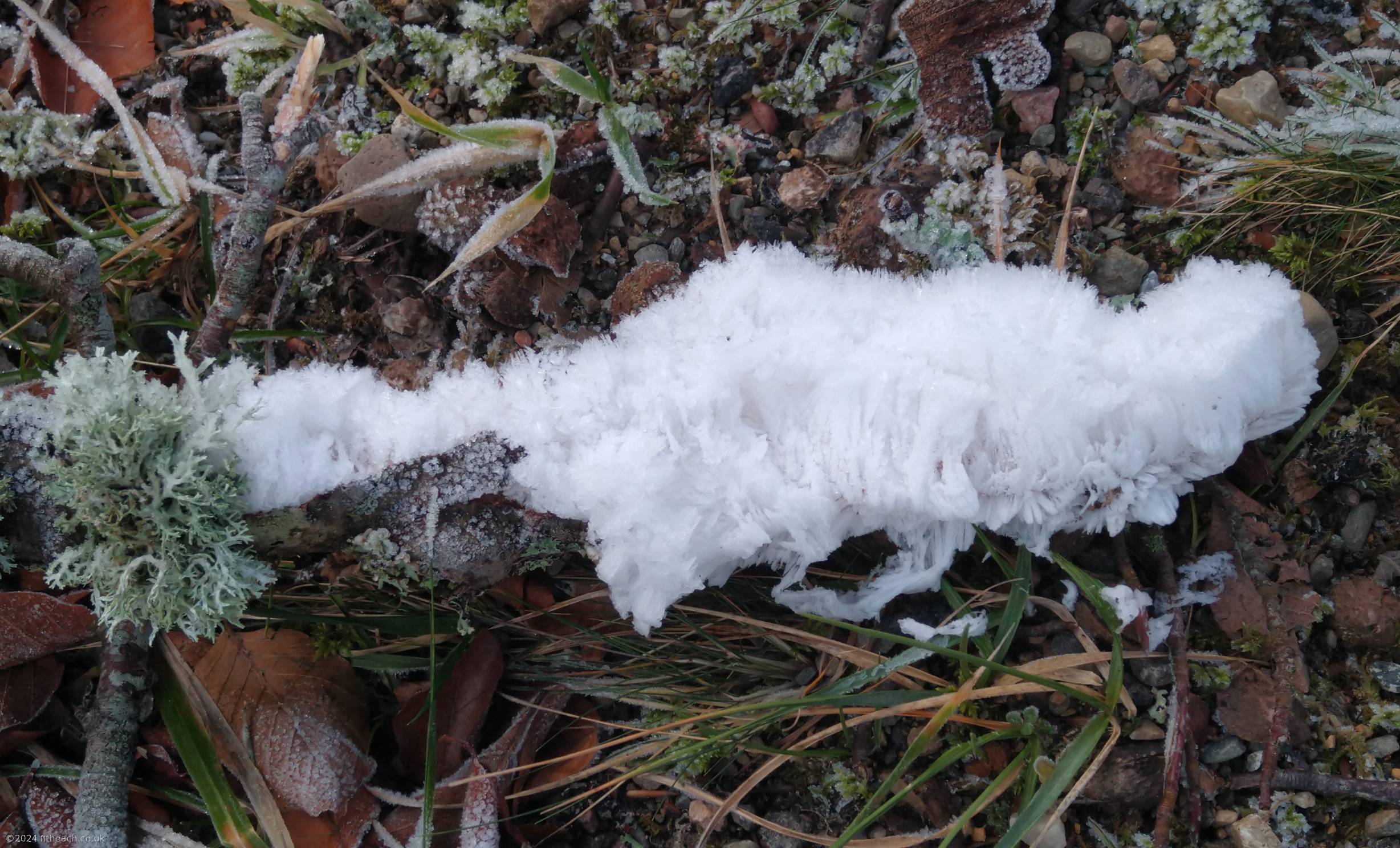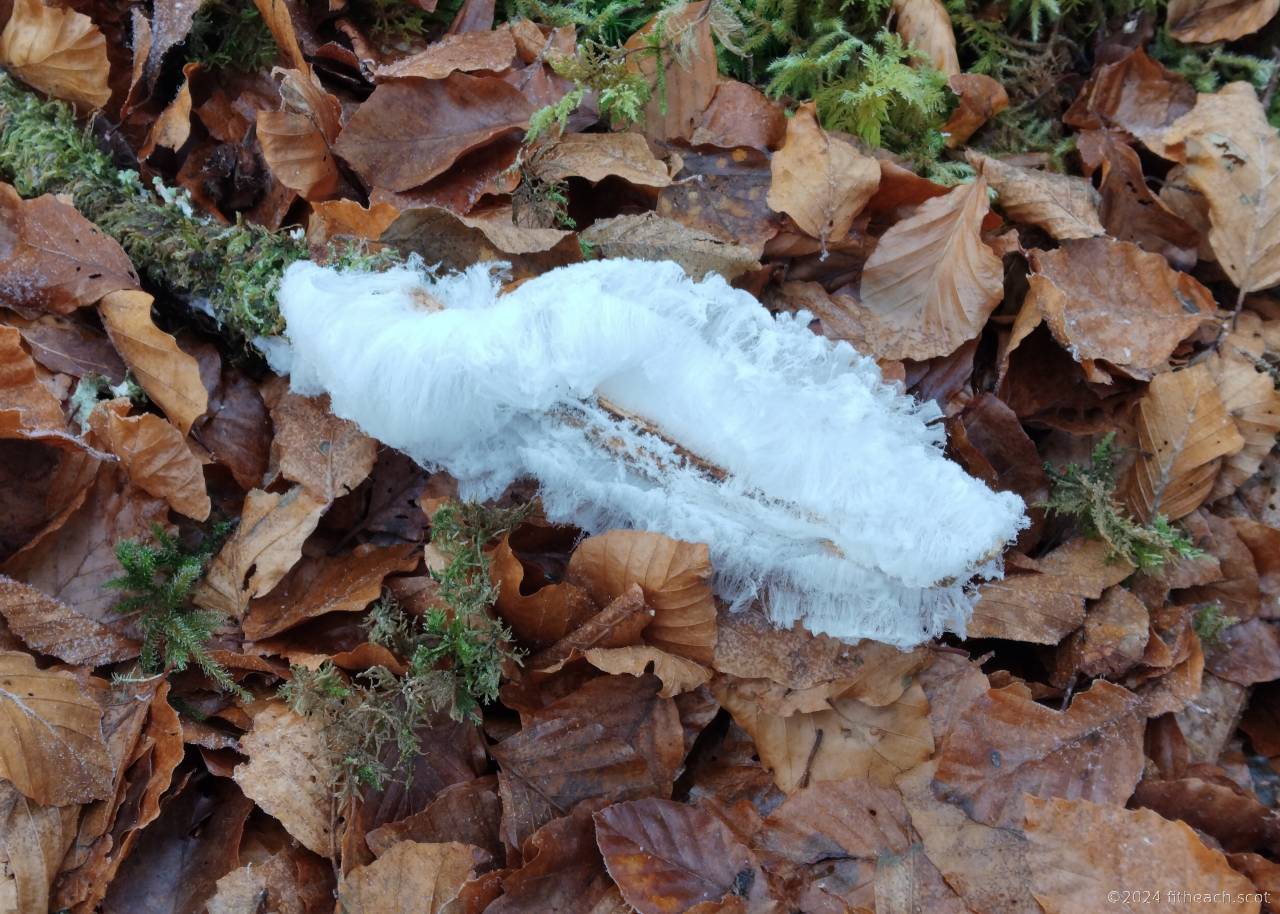Isn't nature a wonderful thing? Yes, of course it is. The manner in which life evolves, and the way it looks, never ceases to amaze. An example of this is the fungus Exidiopsis effusa, and the display it causes, which in English is called Hair Ice.

A small beech branch, lying on the ground. Emanating along the length of the branch is the white hair ice.
Hair ice is found due to the coincidence of several factors. The weather needs to be frosty, conditions need to have been previously moist, wood needs to be present (deciduous branches are best, particularly beech), and Exidiopsis effusa needs to be growing on the wood. Put simply, when moisture near the wood surface freezes it traps a thin layer of liquid between the ice and the pores of the wood. This creates a suction force which pulls the water through the pores, which also freezes in a hair-like structure. Under the right conditions this process keeps repeating, creating the length of "hair". The presence of Exidiopsis effusa is believed to act as a stabiliser, allowing the hair to exist long enough for it to be observed. This last part of the process is called "ice segregation".

Another example of Hair Ice on a small beech branch.
The formation of hair ice was only studied in-depth, and understood, in recent times. Scientists Hofmann, Mätzler and Preuß published their findings in the journal Biogeosciences, in 2015. I find it amazing that something that I've been familiar with all my life has only recently been understood. Not only that, but, the occurrence of hair ice is quite rare, being limited to a band between 45°N and 55°N [1]. It's nice to live somewhere special.
Notes:
- The latitude band was quoted from the research. However, I live much further north than the upper band, and I frequently observe hair ice. For the record, the northernmost part of mainland Scotland is Dunnet Head, at 58°40′N 3°22′W. The southernmost part of the Scottish mainland is Mull of Galloway, Wigtownshire, at 54°38′N 4°52′W. So, most of Scotland exists outside the suggested ideal band. I've excluded the islands, not many trees there. :-)

A closer view of the Hair Ice, where it is possible to see the individual filaments which make up the Hair Ice "beard".